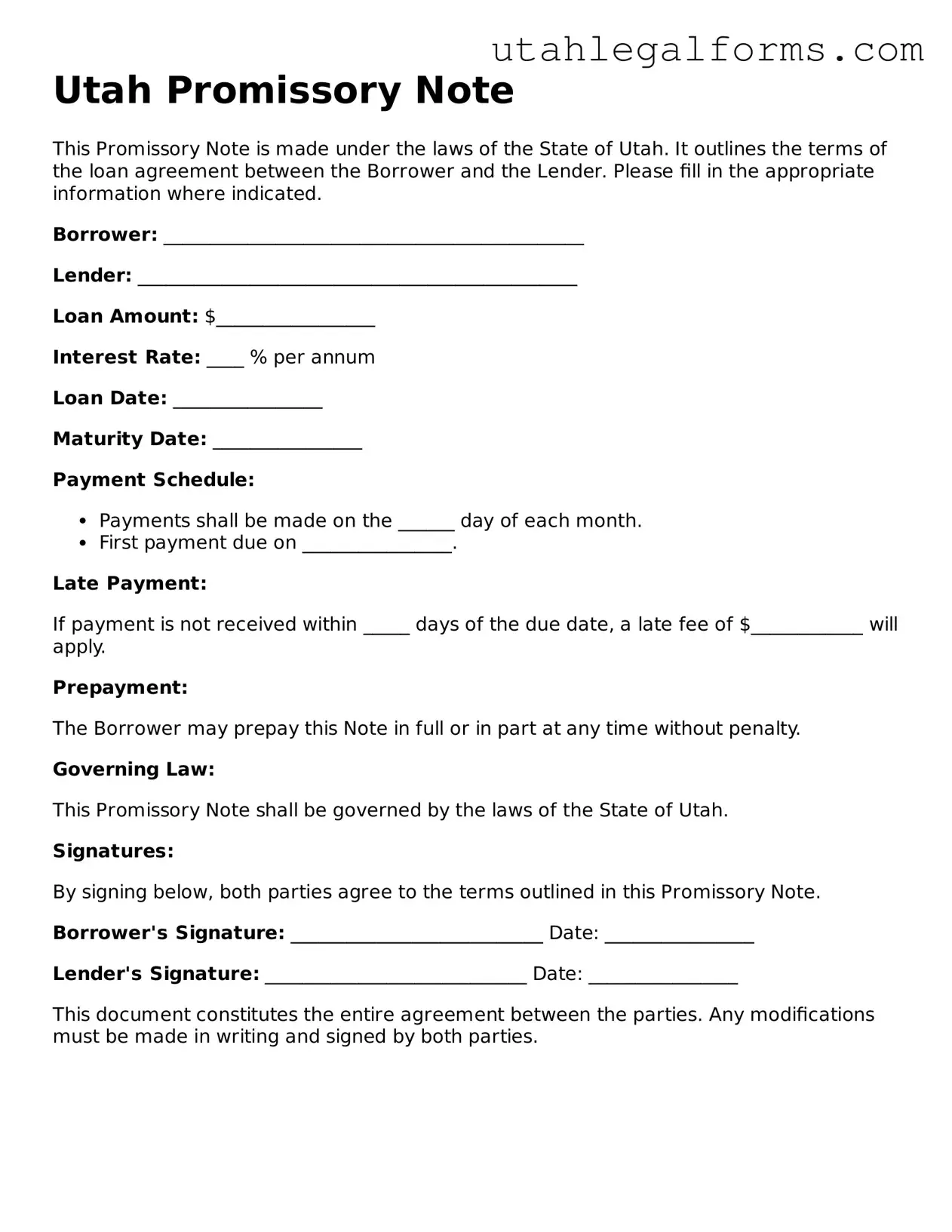Official Promissory Note Form for Utah State
A Utah Promissory Note is a legal document that outlines a borrower's promise to repay a loan to a lender under specified terms. This form is essential for establishing clear expectations and protecting the rights of both parties involved in a financial agreement. If you're ready to create your own Promissory Note, click the button below to get started.
Access Promissory Note Now
